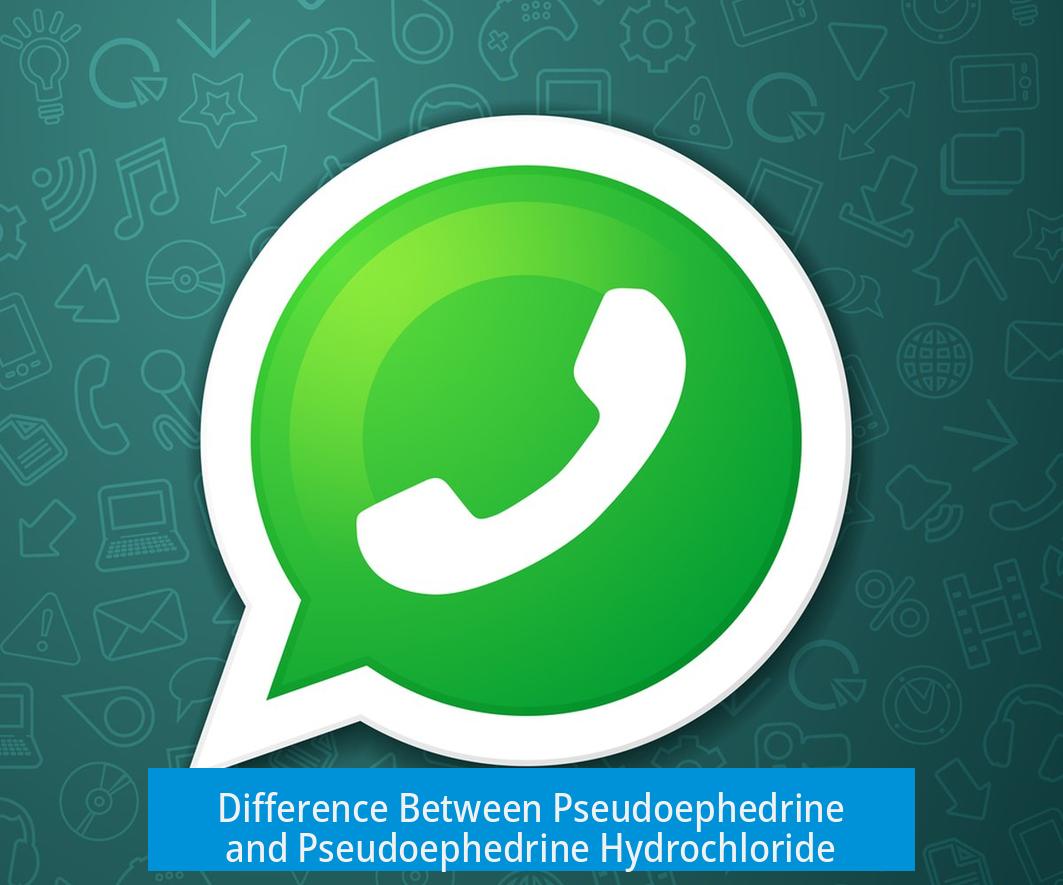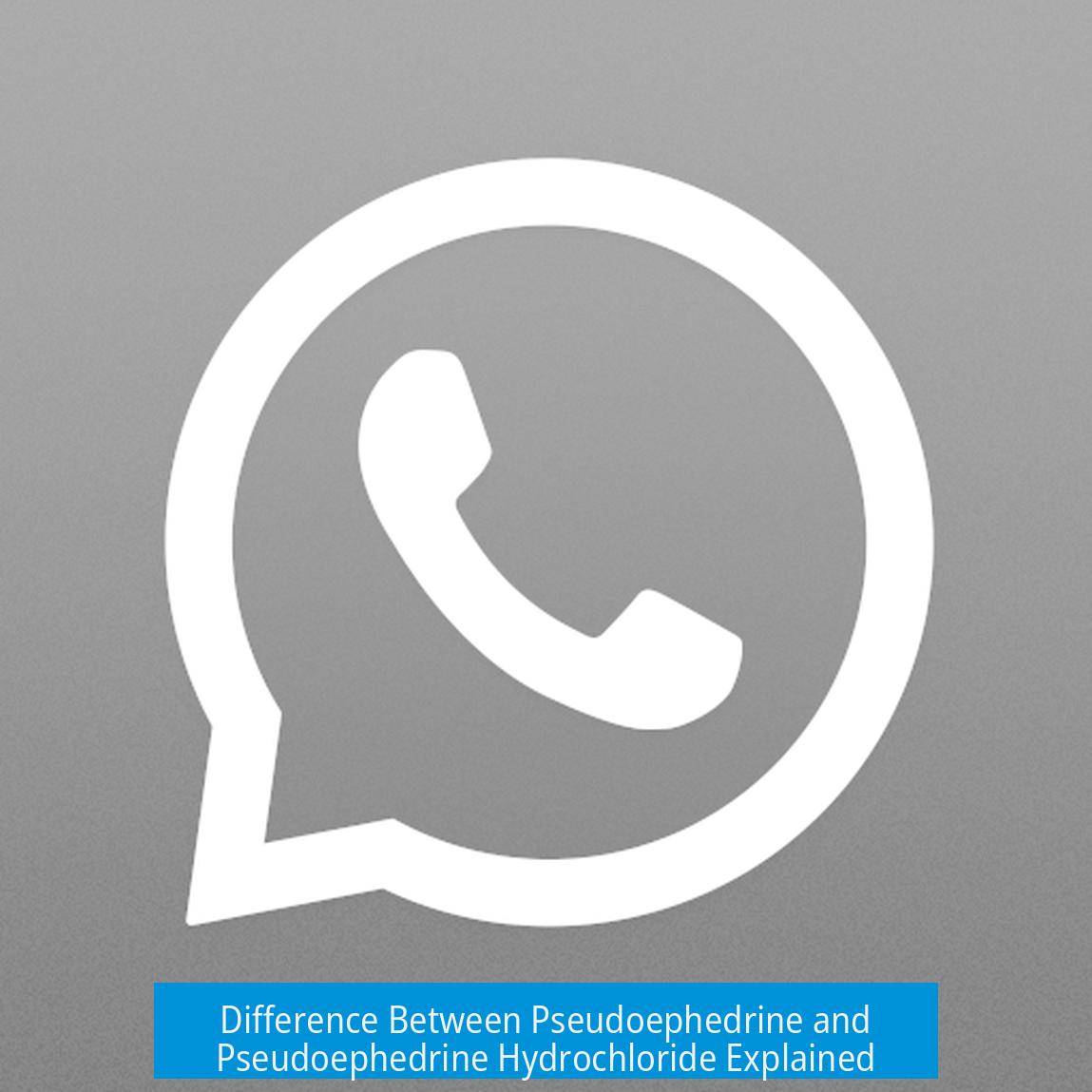Difference Between Pseudoephedrine and Pseudoephedrine Hydrochloride

Pseudoephedrine hydrochloride is the salt form of pseudoephedrine created by combining it with hydrochloric acid (HCl). This salt form enhances water solubility and handling without altering the core chemical structure or therapeutic effects of pseudoephedrine.
Chemical Nature
Pseudoephedrine hydrochloride forms when pseudoephedrine reacts with hydrochloric acid. In this form, the compound exists as a salt: a positively charged pseudoephedrine ion (Pseudo-H+) paired with a chloride ion (Cl−). This is analogous to how hydrates bind water molecules but here it involves an acid-base interaction creating a stable salt.
Structural and Therapeutic Similarities
The hydrochloride addition does not change the fundamental molecular structure of the active drug. Both pseudoephedrine and its hydrochloride salt share the same pharmacological effect as the active pseudoephedrine molecule remains intact. The hydrochloride acts simply as a passive counterion, which does not affect the drug’s mechanism of action.
Solubility and Pharmaceutical Benefits

- Pseudoephedrine hydrochloride is more water-soluble than free pseudoephedrine. This improved solubility benefits drug formulation and absorption in the body.
- The hydrochloride salt allows better hydrogen bonding in solution, enhancing dissolution.
- It tends to be more stable and easier to store and purify during manufacturing.
These practical properties make pseudoephedrine hydrochloride the preferred form in pharmaceutical preparations, even though the therapeutic outcomes between the two forms are nearly identical.
Summary Table
| Aspect | Pseudoephedrine | Pseudoephedrine Hydrochloride |
|---|---|---|
| Chemical Form | Free base compound | Salt formed with HCl |
| Structure | Base molecule | Base molecule + chloride ion (salt form) |
| Therapeutic Effect | Active and effective | Same active effect |
| Water Solubility | Lower solubility | Higher solubility |
| Pharmaceutical Use | Less common | Preferred form for drugs |
Key Takeaways
- Pseudoephedrine hydrochloride is a salt, improving solubility and stability.
- The active pseudoephedrine structure remains unchanged between forms.
- Therapeutic efficacy is equivalent in both forms.
- Hydrochloride form facilitates pharmaceutical formulation and handling.
What is pseudoephedrine hydrochloride compared to pseudoephedrine?
Pseudoephedrine hydrochloride is pseudoephedrine combined with hydrochloric acid to form a salt. This salt form helps with water solubility and handling.
Does the hydrochloride form change how pseudoephedrine works?
No, the hydrochloride salt does not affect the drug’s structure or its therapeutic effect. It works the same way as pure pseudoephedrine.
Why is pseudoephedrine often used as its hydrochloride salt in medications?
Because pseudoephedrine hydrochloride dissolves better in water, it makes drug formulations easier and improves absorption. It also stores better than pure pseudoephedrine.
Are there any differences in dosage between pseudoephedrine and its hydrochloride form?
The dosage is essentially the same since the active component is pseudoephedrine. The hydrochloride is just a salt form to aid delivery and stability.
Is pseudoephedrine hydrochloride more stable than pseudoephedrine?
Yes, the hydrochloride salt form is generally easier to store and handle due to its improved stability and purity properties.





Leave a Comment